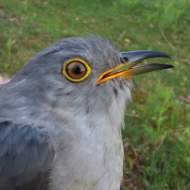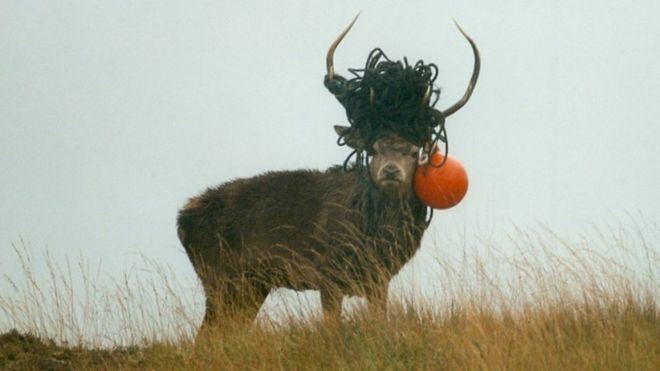It's therefore been a case of finding wildlife in more unusual locations. For example, I was wandering home through the centre of Ringwood one evening when I stumbled upon a group of black-headed gulls looking for food. Then I noticed that one of the gulls had a much darker head than the others.
 |
| Apologies for the low-quality phone shot! |
I popped out to the garden on one hot evening and heard something moving in the leaf litter. I had a look and was surprised to find a common toad there.
I initially thought it odd to see an amphibian in the garden at this time of year- I was concerned that it was too hot. Toads though are actually more tolerant of dry environments than frogs and often use gardens as their habitat in summer2. They usually stay in a hollow in the ground during the day and emerge after dark to feed on ants, slugs and worms.
One morning I headed to the bathroom and was surprised to find a stunning moth sat just above the bathroom mirror.
This is a black arches moth. It's usually a woodland species so it's somewhat surprising to find it in a suburban environment but maybe there are enough trees nearby to support it. This species is considered a pest in forests as they feed voraciously on spruce and pine needles. A single caterpillar can eat 200 pine or 1000 spruce needles and about twice as many are damaged from being bitten off. If there are enough caterpillars or other factors in play they can causes the death of trees.
I found this impressive moth early one evening on a fence on my street.
This is a willow beauty but despite the name this species have a number of food plants including clematis, ivy and hawthorn- exactly the sort of plants you find in suburban gardens. They rest on the day on tree trunks though to a moth a wooden fence looks the same.
I've been out on a few evenings in the garden trying to look for moths and whilst here have been plenty around, photographing them has proved very tricky. One species I did capture was this one.
This is a rosy footman moth. These moths are a pink colour, which is unusual for moths, and are only found in the south of the UK- they are most common nearest the south coast.
At the start of June I was surprised when one of the BTO's tagged cuckoos, Bowie, visited my patch. Well Bowie has now crossed the Sahara having travelled an incredible 3,040 miles since leaving the New Forest on 12th June- an average of 86 miles a day3! Cuckoos are truly incredible birds.
Finally, I have been asking for people to share their local wildlife sightings and have received some interesting things so far. I was delighted to discover that there appears to be a strong community of hedgehogs in the centre of Ringwood with several people putting out for them.
 |
| Picture from Hedgehogs of Ringwood FB Group |
Hedgehogs have seen their populations decline 66% in the last twenty years. The centre of Ringwood is a great habitat for them as there are few cars after dark and a network of alleyways which allow them to travel between gardens. Fantastic residents providing food for them is an added bonus and with numbers like this in just one garden it's clear hedgehogs are doing well here in Ringwood.
That's all for today but with some time off for the summer coming up I expect to have lots more to share with you over the coming weeks.

















































